|
Address
64-1066 Mamalahoa Hwy, Waimea/Kamuela, HI 96743 Hours Sunday – Noon to 8pm, Monday thru Saturday 11am – 8:30pm Phone Number (808)-887-1717 http://bigislandbrewhaus.com/ |
Thomas Kerns, has been one of Hawaii’s most awarded Brewers at the U.S. Open Beer Championships. His Big Island Brewhaus has been one of Hawaii’s most awarded Breweries at the U.S. Open Beer Championships. This focus on quality is apparent as Kerns explained, “We're not really focused on quantity growth. We're more focused on quality growth and creating what we want to share with the market.” Hawaii Beverage Guide had the opportunity to interview Kerns to learn more about Big Island Brewhaus.
About the Brewery
-
Founding Story
-
Brewery Name
-
Approach to Beer
-
Hawaii's Influence
<
>
Given the size and hyper local focus of Big Island Brewhaus, its founding story is really about Kerns’ journey into and through beer. And like many in the current iteration of the American Craft Beer movement, he started as a home brewer. According to Kerns, “I just fell in love with the flavors in beer and then started the discovery of what beer can be. I lived in Germany while in the Army in the '80s, and got turned on to some classic styles of beer. When I came home to the US, I really couldn't find those beers anywhere, [so I] started exploring the idea [of beer making] and got into homebrewing. That led me into some of the newer breweries that were opening in the late '80s and early '90s.”
Homebrewing eventually led Kerns into exploring professional brewing. His first job was at McMenamins Breweries in Oregon working an entry level position. During his time there, Kerns said, “McMenamins was an extension of many creative aspects coming out of homebrewing. There was a big embracement of all the world's styles [which were becoming] more and more publicized by beer writer, Michael Jackson and others. At that time, Americans were playing with dry hopping, [which is more of a British technique] and also looking to use hops that were being grown in the United States. Companies like Sierra Nevada, [started] using American hops assertively and created the American Pale Ale. A lot of the early brewers at McMenamins were doing some amazing Pale Ale IPA type of beers. [These beers] were a little more Northwest style in the sense [that they have] deeper caramel malt character [and] pretty heavy bitterness coming from Cascade, Centennial, Chinook, Nugget hops and whatnot.”
Kerns’ development as a brewer led to him opening a brewery in the Philippines in 1995. And in 1998, Kerns moved to Maui with the opportunity to add a brewery to Maui Fish & Game, a restaurant started by a friend Kerns met during a sabbatical he took to Maui while in college. In 2005, the brewery and restaurant were acquired by Garret Morrero and Melanie Oxley and became Maui Brewing Company. However, Kerns stayed onboard. According to Kerns, “My evolution there was looking at a lot of the newer beers that were coming out of the West Coast and the Bay area. Just really starting up in San Diego with the likes of Blind Pig and Russian River and they were doing some amazing things with American hops and dry-hopping with pellets. That was a bit newer to me. Some of the beers that I started creating at Fish & Game Brewing and at Maui Brewing Co. were a blend of my Northwest styles and the West Coast Styles that you see today.”
However, Kerns had the itch to open his own place. Kerns’ wife had lived on the Big Island for ten years, and they had a bunch of friends there, too. Also, they just really wanted to live there! According to Kern’s, “[The Big Island] is a great community to be a part of. They didn't have a brewery here, and we wanted to create a community gathering place that featured local food and local flavors as well as an atmosphere featuring live local music and a place where friends and family can get together and hang out. [In 2008], when we were looking for opportunities that would potentially allow us to build a brewery, the owners of Tako Taco Taqueria were looking to sell their restaurant; they also had a warehouse building in the back of the restaurant. We struck a deal with them to take over the restaurant and we eventually added a brewery to the back, melding the businesses into a brewpub.” The brewery then opened in 2011.
Homebrewing eventually led Kerns into exploring professional brewing. His first job was at McMenamins Breweries in Oregon working an entry level position. During his time there, Kerns said, “McMenamins was an extension of many creative aspects coming out of homebrewing. There was a big embracement of all the world's styles [which were becoming] more and more publicized by beer writer, Michael Jackson and others. At that time, Americans were playing with dry hopping, [which is more of a British technique] and also looking to use hops that were being grown in the United States. Companies like Sierra Nevada, [started] using American hops assertively and created the American Pale Ale. A lot of the early brewers at McMenamins were doing some amazing Pale Ale IPA type of beers. [These beers] were a little more Northwest style in the sense [that they have] deeper caramel malt character [and] pretty heavy bitterness coming from Cascade, Centennial, Chinook, Nugget hops and whatnot.”
Kerns’ development as a brewer led to him opening a brewery in the Philippines in 1995. And in 1998, Kerns moved to Maui with the opportunity to add a brewery to Maui Fish & Game, a restaurant started by a friend Kerns met during a sabbatical he took to Maui while in college. In 2005, the brewery and restaurant were acquired by Garret Morrero and Melanie Oxley and became Maui Brewing Company. However, Kerns stayed onboard. According to Kerns, “My evolution there was looking at a lot of the newer beers that were coming out of the West Coast and the Bay area. Just really starting up in San Diego with the likes of Blind Pig and Russian River and they were doing some amazing things with American hops and dry-hopping with pellets. That was a bit newer to me. Some of the beers that I started creating at Fish & Game Brewing and at Maui Brewing Co. were a blend of my Northwest styles and the West Coast Styles that you see today.”
However, Kerns had the itch to open his own place. Kerns’ wife had lived on the Big Island for ten years, and they had a bunch of friends there, too. Also, they just really wanted to live there! According to Kern’s, “[The Big Island] is a great community to be a part of. They didn't have a brewery here, and we wanted to create a community gathering place that featured local food and local flavors as well as an atmosphere featuring live local music and a place where friends and family can get together and hang out. [In 2008], when we were looking for opportunities that would potentially allow us to build a brewery, the owners of Tako Taco Taqueria were looking to sell their restaurant; they also had a warehouse building in the back of the restaurant. We struck a deal with them to take over the restaurant and we eventually added a brewery to the back, melding the businesses into a brewpub.” The brewery then opened in 2011.
Beyond being about the location (Big Island), Kerns explained, “Brewhaus is a blend of English and German. It just came up as we just started calling it that and just thought we'd spell it a little differently. Haus in German means something like a home, and [Big Island Brewhaus] is like a home away from home. Also, a gasthaus is just like an English pub. We also wanted [our name] to be a little more informal, and geared towards rubbing elbows with the people that come into the brewery like they would a local gathering place.
Big Island Brewhaus’ creative process starts with research to evaluate ingredients and in particular, different hop profiles. Research includes referencing outside studies on hops, malts and yeast, but more importantly, conducting evaluations of different ingredients in-house. A sense of evolution marks their creative journey as they constantly look to be inspired by flavors just as they inspire people with the flavor they create in their own beers. Kerns noted, “Within the last few years, it's been fascinating to watch the development of hop character in hazy beers. Though I'm not a real big fan of that style, I think there's a lot to be learned from how people are approaching and creating hop character in the beer. We haven’t actually brewed one, but we've learned a lot from our research on [hazy beers.] [It includes] using different hop combinations, intentionally using certain hops with different techniques at different times, and also combining different yeast strains [with different hops], which makes a big contribution to how the hops taste in the beer.”
Brewhaus has always created beers in a full range of styles from very light and refreshing to bigger, deeper, richer beers. There is a sense most people gravitate more towards “refreshing” as the weather on the Big Island bears an affinity to an endless summer feel. Kerns explained “Whatever we're brewing, we strive for it to be something that draws you in and is refreshing, but also inviting. We want it to be something that someone's going to want more than one of. At the same time, brewing wise, I've always been interested in producing my own versions of world-class styles as well as adding potentially unique local tastes to [the beer]. That comes from homebrewing and brewing at McMenamins. We used to do a lot of different fruit-infused and spiced beers; we've continued to do just that and try to work with farmers and use coffee and honey, and several different fruits in the beers.”
Thomas Kerns Brewmaster
Ingredients
-
Malts
-
Hops
-
Yeast
-
Water
<
>
Like in most breweries, the malt that is used is dependent on the beer being made. At Big Island Brewhaus, German Pilsner malts are generally used as a base for all their lagers. Then, depending on the type of ale, some Pilsner malt might also be used. However, it is typically more of the American or Canadian two-row barley that is added. Some of the bigger beers use English Maris Otter malt.
To source malts, Big Island Brewhaus uses both Y. Hata’s deal with Country Malt Group and Sysco’s deal with Brewer’s Supply Group because there is some overlap, but each group has some malts the other one does not provide. This has also allowed for greater flexibility when ordering. According to Kerns, “We can bring [in malts] on a weekly basis, and we don't have to store as much. It's cost-effective for us. Now we can just plan ahead and pre-order about 20% of the malt that we have to bring in on our own. That works out pretty well.”
To source malts, Big Island Brewhaus uses both Y. Hata’s deal with Country Malt Group and Sysco’s deal with Brewer’s Supply Group because there is some overlap, but each group has some malts the other one does not provide. This has also allowed for greater flexibility when ordering. According to Kerns, “We can bring [in malts] on a weekly basis, and we don't have to store as much. It's cost-effective for us. Now we can just plan ahead and pre-order about 20% of the malt that we have to bring in on our own. That works out pretty well.”
On the German side with lager beers, either Czech Saaz or German Hallertauer are predominantly used. There are a couple of other new German hops that Brewhaus favors --Hallertau Blanc and Mandarina Bavaria. Kerns explained, “We're all over the map with different hops and where we use them. We use a lot of traditional American hops in our more British and American style beers, such as Cascade, Centennial, Simcoe, Amarillo, Sittre. But, we're also using some newer [hops] such as Galaxy, Ekuanot and Palisade.”
In their research, the Brewing team is always on the lookout and is always evaluating alternative hop varieties that may be nearly impossible to get or cost prohibitive. According to Kerns, “As certain higher-in-demand hops have increased in price, I'm discovering that we can find other ways to get similar results.”
To source hops, Big Island Brewhaus has contracts with Yakima Chief as well as Brewers Supply Group. They have also bought SpotHops from a variety of individual farms and have even grown their own on the Big Island. Though the hop growing project is no longer active, when asked about the project, Kerns replied, “It was a great experiment. We definitely proved and learned you can grow some quality hops [on the Big Island]. We also found that it really takes a concerted effort from experienced farming to really succeed, and we didn't really have the time or energy to do a whole lot of that. We spent a few years at it and we definitely grew some hops a couple years in a row. We also made a fresh hop beer using some of the hops [we grew] and it worked out pretty well.”
In their research, the Brewing team is always on the lookout and is always evaluating alternative hop varieties that may be nearly impossible to get or cost prohibitive. According to Kerns, “As certain higher-in-demand hops have increased in price, I'm discovering that we can find other ways to get similar results.”
To source hops, Big Island Brewhaus has contracts with Yakima Chief as well as Brewers Supply Group. They have also bought SpotHops from a variety of individual farms and have even grown their own on the Big Island. Though the hop growing project is no longer active, when asked about the project, Kerns replied, “It was a great experiment. We definitely proved and learned you can grow some quality hops [on the Big Island]. We also found that it really takes a concerted effort from experienced farming to really succeed, and we didn't really have the time or energy to do a whole lot of that. We spent a few years at it and we definitely grew some hops a couple years in a row. We also made a fresh hop beer using some of the hops [we grew] and it worked out pretty well.”
Most of the yeast being used in the Ales, including the Belgian Ales, is from Imperial Yeast in Portland, Oregon. Kerns explained, “We really like what they're doing. We've also had them isolate a couple unique strains for us, one being a wild strain that we captured while prospecting for yeast [as part of a collaboration] with Lanikai Brewing Company.”
Being a long time brewer, Kerns has used yeast from almost just about any company out there and also uses yeast from White Labs.
To minimize flavor drift, yeast is carefully measured and cell counts are done on every batch; that way, Kern is able to pitch exactly how much yeast is needed in order to get proper growth. Big Island Brewhaus also uses, depending on the yeast strain, anywhere from five to a dozen generations of yeast before starting fresh.
Being a long time brewer, Kerns has used yeast from almost just about any company out there and also uses yeast from White Labs.
To minimize flavor drift, yeast is carefully measured and cell counts are done on every batch; that way, Kern is able to pitch exactly how much yeast is needed in order to get proper growth. Big Island Brewhaus also uses, depending on the yeast strain, anywhere from five to a dozen generations of yeast before starting fresh.
100% of the water on property for both the restaurant and brewery is particulate-filtered and then carbon-filtered to remove chlorination from the water. However, according to Kerns, “Our water up here is actually quite soft. We're really able to brew whatever we want. We don't have to remove any of the minerals and start over. For certain beers, we add different minerals, such as calcium sulfate and calcium chloride. [However], for a lot of our lager beers, we don't add a thing. They come out very soft, very similar to [beer brewed with] Munich, Germany water. If you've ever had a German Helles, it's very similar to that kind of water.”
Barrel Program
Big Island Brewhaus has a small barrel program. There are two seasonal bottle and draft releases in February and March. are the Chardonnay Barrel Aged Golden Sabbath & the Bourbon Barrel Aged Black Whole Stout. Other small creative barrel projects are draft only. Shortly forthcoming is the “Manhattan Project,” which consists of a bourbon barrel aged Red IPA with cherries added called the Red Giant. The goal was to emulate a Manhattan cocktail. They also have a wild beer that's still aging and approaching eight months old. Kerns noted, “It's been interesting to watch [the beer] develop because it [uses] 100% wild prospected yeast. Typically, we use pure yeast to maintain purity. It's been fun to dabble in that.”
The Beer
-
Golden Sabbath
-
White Mountain Porter
-
Overboard IPA
-
Holy Humulus
-
Seasonals
<
>
“I've long had a big love for [Belgian Strong Ales] and other heavy style beers from [breweries like] Duvel and Orval. With the Sabbath series, in which we do the Golden as well as the Dark, instead of using any adjuncts and sugar, we use local honey and then try to approach the beer with a complimentary malt character and hops.”
“At Maui Brewing Company, we were (from what I know) the first brewery in the States and (I guess) in the world, to do commercially brewed beer that had toasted coconut.” Said Kern. “I had started that as a homebrewer and we did special batches at Fish & Game and in the early days of Maui Brewing. When we decided to do full-sized batches and then later can the beer, we thought it was a great idea to take that beer [with toasted coconut] and move it into a higher production. It was really a unique beer and a crowd-pleaser. What we've done to the White Mountain is an evolution of that. I didn't want to just do the same thing. In the morning, I always enjoy my coffee with some coconut milk and honey. I always enjoyed that flavor [combination] and I wanted to try to create that in a beer. We decided to call it White Mountain in honor of Mauna Kea, but also because White Mountain coffee is the name of the coffee that we've been using.”
“It’s by far our best-selling beer and it's a continuing evolution. We're always looking at how to improve the hop character according to our own tastes. The spirit of the beer has really remained the same, in that it is West Coast style, but it's got a deeper, richer malt character than most West Coast IPA styles. We use a little Munich malt and a touch of caramel malt in there, and then a blended variety of American hops. It's heavily dry hopped.”
Kern describes the Holy Humulus as being “an IPA with 100% whole-cone hop flowers. [It gives the beer when] dry-hopping, a deeper, more firm bitterness, and a more resiny character. If you're familiar with a baseline style of how a lot of Sierra Nevada IPAs taste, this style emulates that because Sierra Nevada uses whole-cone hops almost exclusively. Back in that day, McMenamins, Sierra Nevada, and Caldera Brewing were typically using whole-cone hop flowers in their beers. Once I branched out, I started using a lot of different varieties of pellets as well. To this day, we do still use a good amount of whole-cone hop flowers with all of our beers, including Overboard.”
Kerns does around 20 to 30 seasonal [beers] throughout the year. While he shares his beers with a wide array of restaurants and bars at any given time, he releases his beer in limited quantities to the rest of the state. According to Kern, “We do an Octoberfest Maibock in September and then in May respectively. We recently released “Jabba Da Gose,” which is made from a sour gose style paired with jaboticaba. We do a Big Mac Nut Brown Ale with toasted mac nuts and aged with kiawe spiked bourbon. We usually release this around Thanksgiving season. Our “Red Sea of Cacao” is probably our most popular anticipated seasonal, it’s an imperial red ale brewed with local cacao and sea-salt – we release it in mid December – in bottles and draft.
We've got two new bottle releases that are coming out seasonally, too, that we do once a year. That's our Barrel Eight series. We have a Chardonnay barrel-aged, Golden Sabbath, and also a Bourbon barrel-aged, Black Whole stout.”
We've got two new bottle releases that are coming out seasonally, too, that we do once a year. That's our Barrel Eight series. We have a Chardonnay barrel-aged, Golden Sabbath, and also a Bourbon barrel-aged, Black Whole stout.”

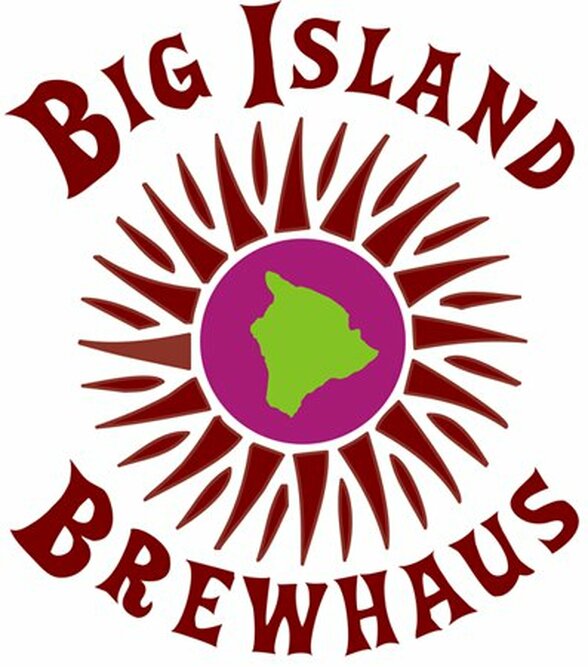
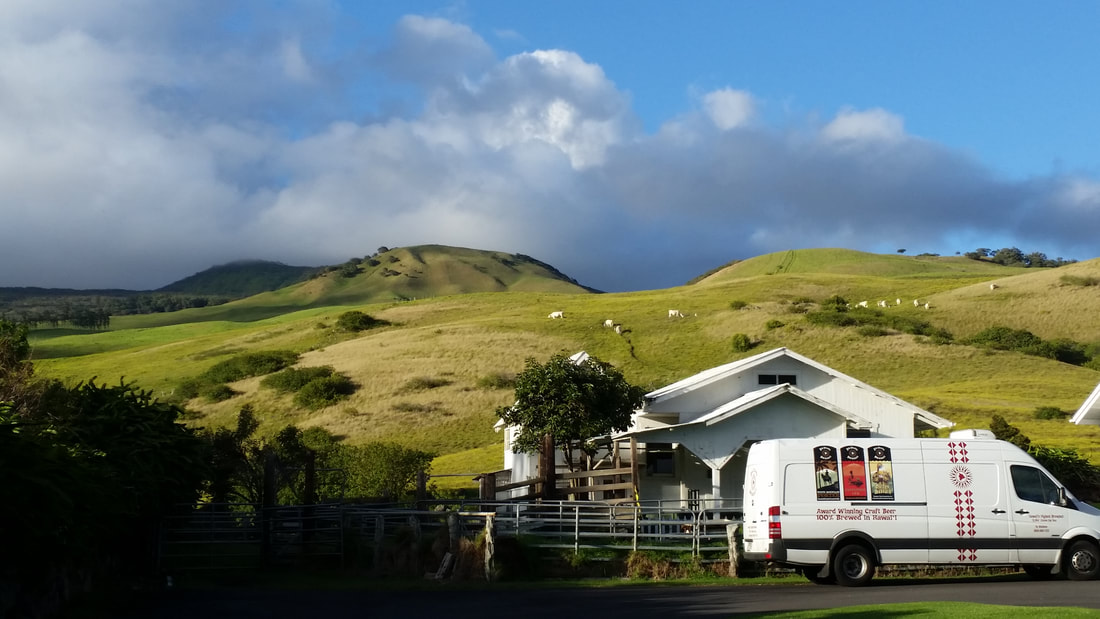
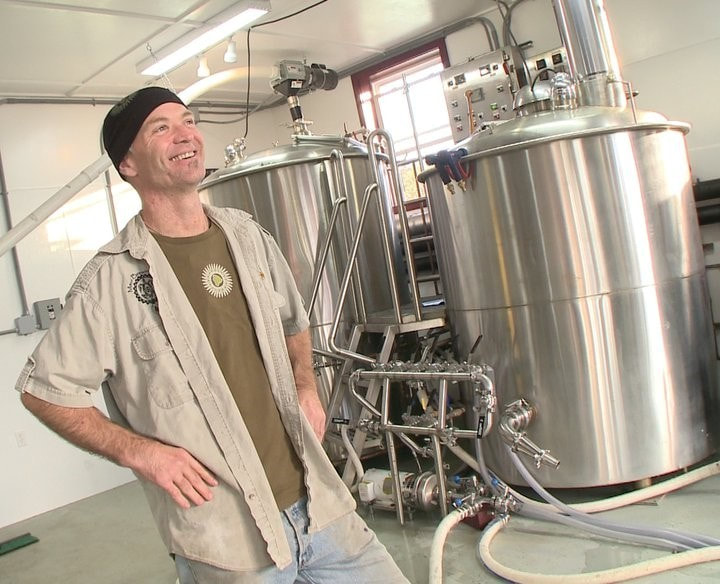
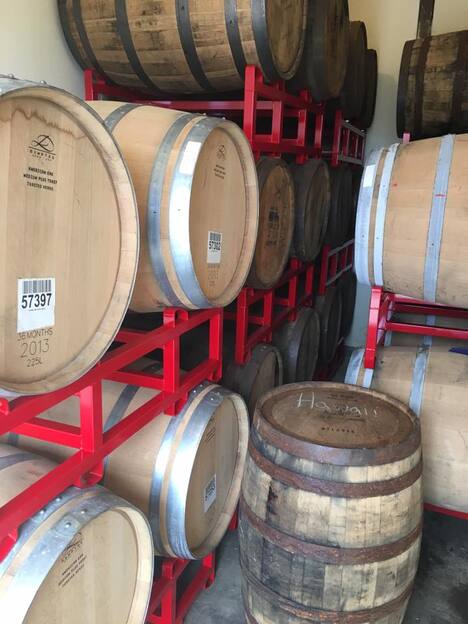
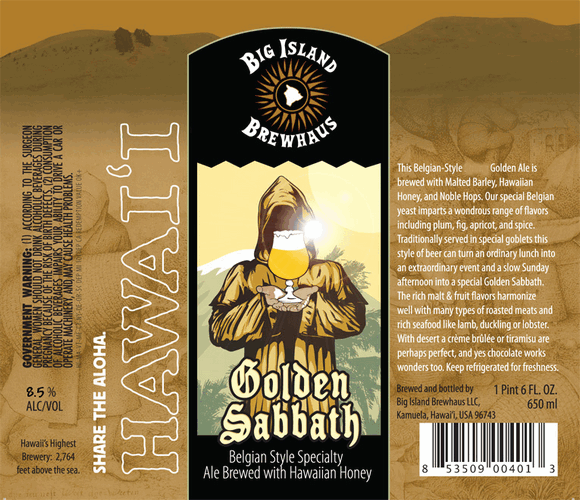
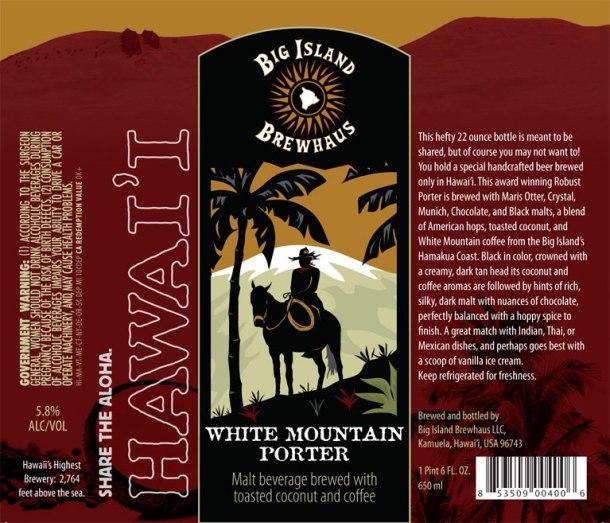
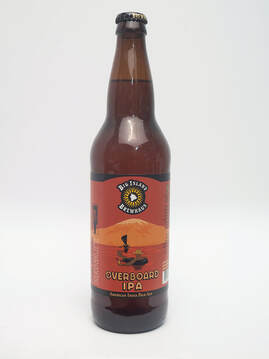
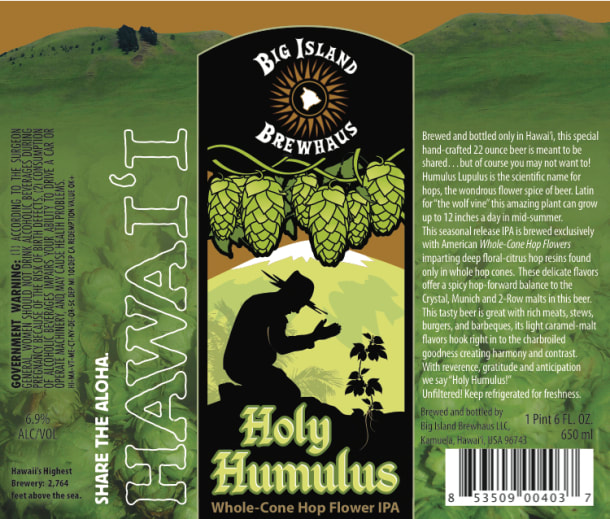
 RSS Feed
RSS Feed